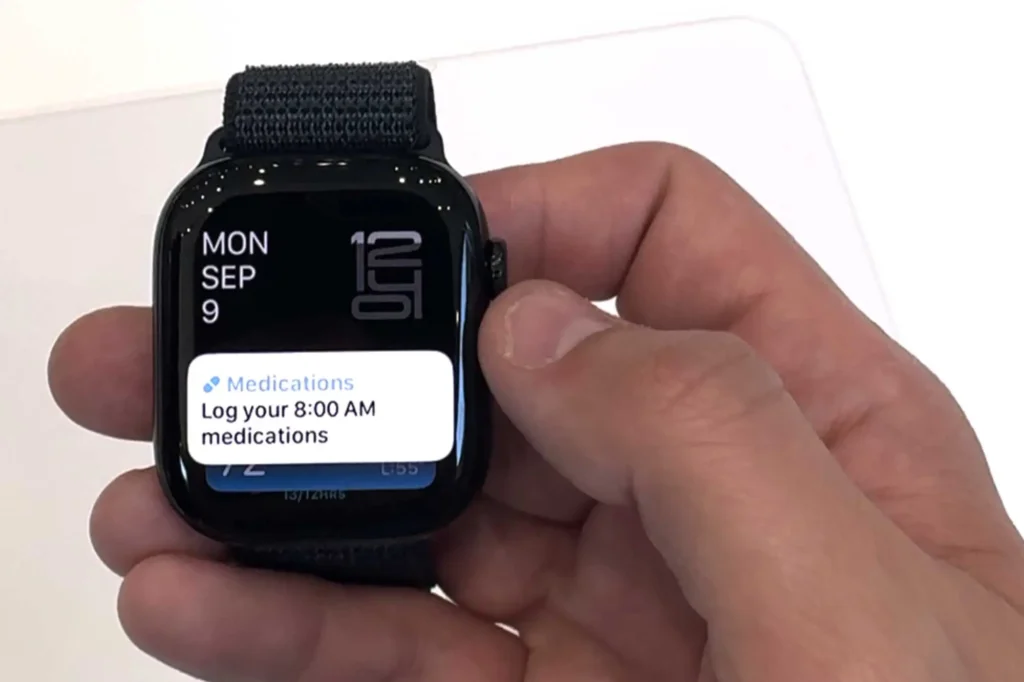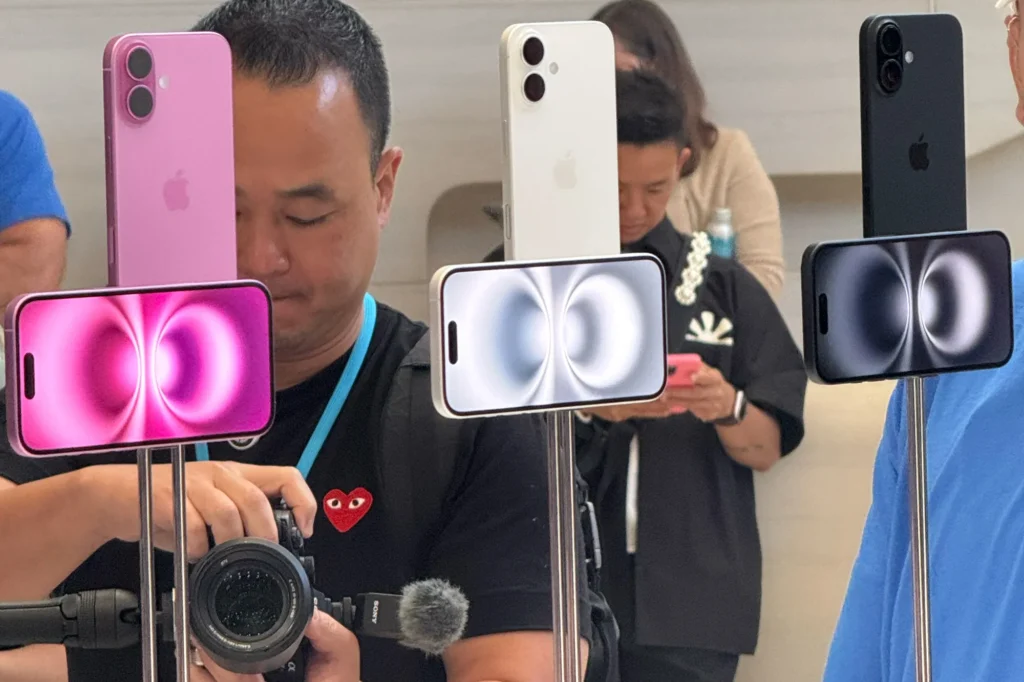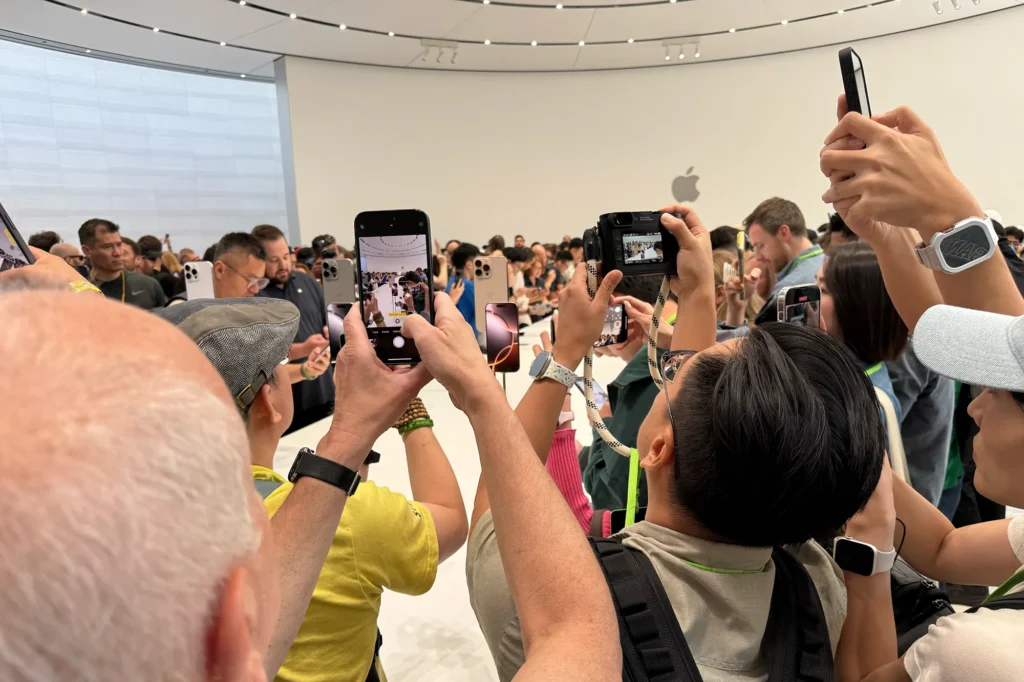Apple unveiled its newest wearables and smartphones at an event hosted at its Cupertino, California, headquarters like clockwork. PopSci received an invitation to visit in person and see the new devices, which go on sale on September 20 and are presently available for preorder.
The “It’s Glowtime” event, so called because of the luminous halo that appears around your phone screen in iOS 18 when utilizing Siri, showcased notable enhancements to Apple’s non-professional devices, which are receiving the most significant updates in years. Apple is also entering the AI space with hardware and features that match competing AI projects for Android phones.
Apple Watch 10: X is the designated place

Although the Watch won’t turn ten until April of next year, Apple chose to celebrate early with the release of the Apple Watch Series 10. The new wristwatch is larger in terms of screen size and lower in terms of bulk than any other Apple Watch that has been offered before. The screen size options for the Apple Watch Series 10 are 42mm and 46mm, which is an increase over the 41mm and 45mm displays found on earlier models. Although one millimeter may not seem like much, it’s a significant enough resolution increase to notice an extra line in other apps and text messages.
The Series 10’s display is large and brilliant when viewed in person, just what you want from a gadget you plan to glance at throughout the day. Even though the new Apple Watch Series 10 models only marginally weigh less than its predecessors—the precise difference will depend on your choice of size and material—you will nevertheless feel relieved when you hold or wear one in your hands.
The speaker system on the Apple Watch Series 10 has been improved to support podcasts and music playback. Likewise, voice isolation has been added to the Apple Watch Series 10’s microphone system, which is useful for taking calls and capturing voice memos. You can use the Oceanic+ app for snorkeling and track dives down to 20 feet below sea level thanks to a new water temperature sensor and depth gauge. Apart from that, sleep apnea may also be monitored with the Apple Watch Series 10. This autumn, a software update for the Apple Watch Ultra 2 will provide this feature. The brand also unveiled a brand-new Milanese band and black titanium hue.
The most noticeable improvement on the Apple Watch Series 10 is its quicker charging. According to Apple, the Series 10 can charge to 80% capacity in around 30 minutes, as opposed to the Series 9’s 15-minute charging time. Apple has not raised the price of the Series 10 in spite of these upgrades. The GPS model still starts at $399, and the version with a cellular antenna costs $499.
iPhone 16: Cleverly crafted both inside and out

New iPhones are typically unveiled by Apple in September, and this year is no exception. The iPhone 16 and iPhone 16 Plus, which skip two CPU generations from the A16 Bionic to the A18 chip, were first shown by Apple. After using the previous generation Pro CPUs in its non-Pro iPhones for a few years, Apple encountered a significant issue: Apple Intelligence. Due to resource limitations, the AI features that Apple unveiled at its Worldwide Developers Conference (WWDC) in June will only be accessible in the iPhone 15 Pro models. With the CPU update, that is no longer an issue.
According to Apple, the A18 chip is 30% and 40% quicker than the A16 Bionic in terms of CPU and GPU performance, respectively. The iPhone 16 uses 30% less power while handling the same workload as its predecessor. You’ll notice an improvement in battery life if you’re not using your iPhone to record 4K videos and play games all the time.
The action button that was first seen on the iPhone 15 Pro last year is now included on the iPhone’s exterior casing. You can save time by mapping this button to launch apps or initiate shortcut automation with a single click. A new Camera Control button was also unveiled by Apple. The iPhone 16 has a strip on its side that is touch-sensitive and responds to swipes and pushes.
Tap the Camera Control button once to launch the Camera app and once more to capture a picture. A prolonged push captures a video. You may access other camera options by lightly pressing on this area of the iPhone. This menu may be swung through to show several options, which you can choose by softly pressing again. In our hands-on experience, this felt right away, and it will become a valuable tool for iPhone photographers who need to capture quick photos and are concerned about adjusting their focus, F-stop, and zoom level without touching the screen.
The iPhone 16’s camera system has been improved at the same time that this camera function was introduced. The iPhone can shoot spatial video because its main and ultrawide lenses are layered on top of one another. New photographic techniques including macro photography are now supported by the improved primary camera. The updated ultrawide camera can now catch 2.6 times more light, which is beneficial for low-light shooting. If you use your iPhone for a lot of video recording, you’ll love the new “Audio Mixer” feature on the iPhone 16. This feature lets you use the new microphone system to focus on specific sounds, such as the voices of people in the frame or ambient noise that is captured while enhancing voice quality to create a more complete picture of the scene.
The iPhone 16 has been given a new metal enclosure and a glass screen that is twice as durable as any other smartphone display, but its buttons and vibrant, easy-on-the-eyes color scheme are the main physical changes. For people who drop their iPhones a lot and don’t want to use a screen protector, this is useful. Apple claims that a redesign of the iPhone 16’s design has improved heat dissipation. Now that the iPhone can support wireless charging at up to 25 watts instead of just 15 watts, this is very crucial.


